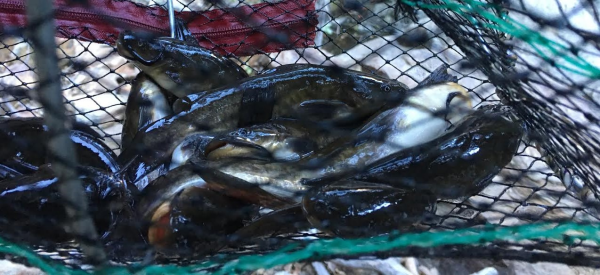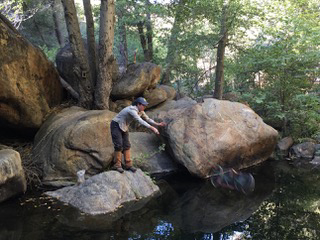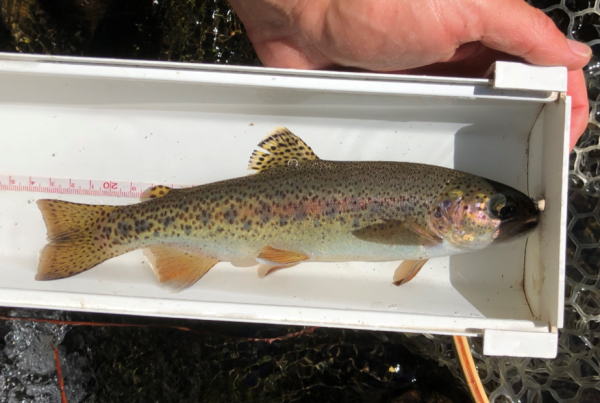It takes a mess of black bullhead to make a meal. However, it only takes a few bullheads where they do not belong to make a mess of an important native rainbow trout fishery.
Small and chubby, the black bullhead is native to middle America and most at home at the bottom of slow-flowing silty pools in prairie streams. They have been stocked well outside their natural range, including southern California.


Black bullhead were discovered swimming in the West Fork San Luis Rey River—a piece of water that harbors the last remaining population of coastal rainbow trout in San Diego County, California. The coastal rainbow dubbed by science as Oncorhynchus mykiss irideus, perhaps in some homage to the goddess Iris, lives in streams flowing into the Pacific Ocean. The subspecies occurs no further south than the San Luis Rey River population, and is considered a Heritage Trout by the California Department of Fish and Wildlife (CDFW).
Black bullhead escaped into the remote West Fork San Luis Rey River from a breached upstream stock tank. The small catfish took a hold in the trout stream. Black bullhead produce many eggs, care for their young and can survive extremes in temperatures and habitats. Thus, bullheads can out-compete the more desirable native trout for food and space. The non-native black bullhead also degrade habitat by their feeding behaviors, clouding the stream, making it more difficult for sight-feeding trout to find food. Black bullhead possess a strong sense of taste and are direct predators on trout eggs incubating in the stream bed as oxygen-rich water percolates through otherwise protective gravels in the spring of the year.
Relying on a Sport Fish Restoration Grant derived from excise taxes paid by fishing tackle manufacturers, biologists from the CDFW interceded. In 2016, fish biologists deployed a number of collapsible minnow traps baited with cat food and fished them over many nights, the time at which black bullhead are most active. Captured black bullhead, culled out of the stream to the point of depletion, were counted and euthanized. Biologists replicated the baited traps endeavor in 2017 and 2018, catching zero black bullhead.

The work paid off for fish and fishing: CDFW biologists counted 33 black bullhead and 72 coastal rainbow trout during an initial daytime snorkel survey in 2016. Following the concentrated removal of the invasive bullheads, a snorkel survey a year later revealed zero bullhead and 446 rainbows, mostly young of the year. Reduced predation on coastal rainbow trout eggs may explain the difference, aided by flows favorable to the sport fish.
-- Craig Springer
Springer is with U.S. Fish and Wildlife Service – Wildlife and Sport Fish Restoration Program